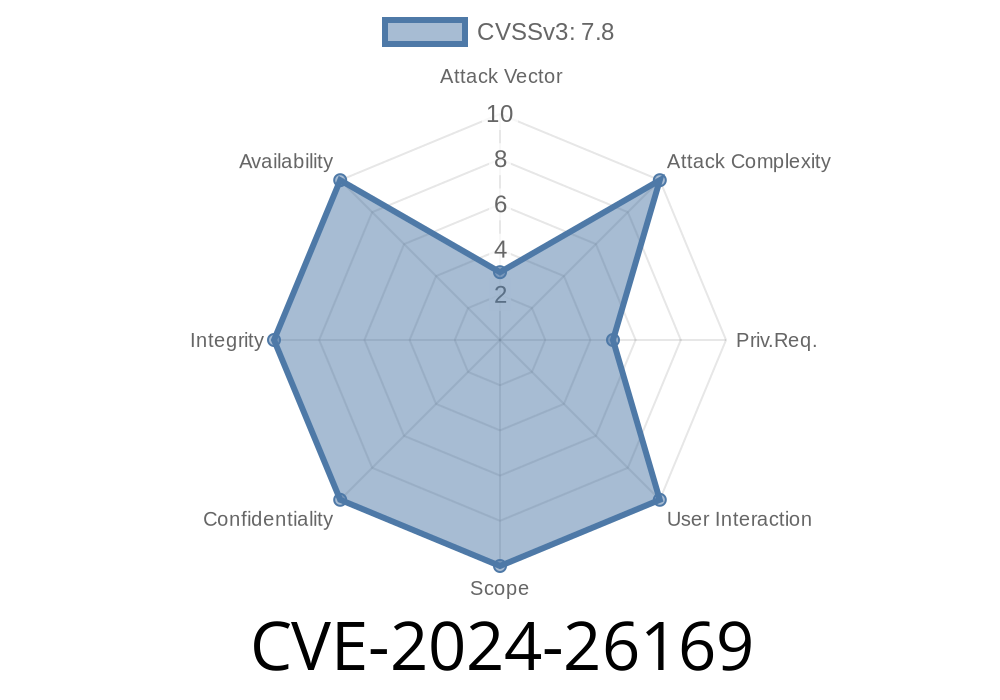The Windows Error Reporting Service (WERS) is a feature in Microsoft Windows that collects and sends data on software crashes and other issues to Microsoft for analysis. Although this feature is intended to help developers and users alike, it can be exploited by attackers to gain unauthorized elevated privileges. In this blog post, we will discuss the details of this elevation of privilege vulnerability (CVE-2024-26169), provide code snippets demonstrating exploitation, and offer links to original references.
Details of the Vulnerability
A successful exploitation of this vulnerability allows an attacker to gain elevated privileges, effectively taking control of the affected system. It was discovered that WERS improperly handles certain operations, which can be exploited by an attacker with local access to the system to run arbitrary code with higher privileges. This can lead to complete compromise of the system.
To exploit this vulnerability, an attacker must have access to an account on the target system, either through stolen credentials or other means. Once the attacker has access, they can run a specially crafted application that triggers the vulnerability in WERS and escalates their privileges.
The following Python code snippet demonstrates the exploitation of CVE-2024-26169
import os
import ctypes
def exploit():
# Prepare the malicious DLL
dll_data = b"..." # Replace with the binary content of the malicious DLL
with open("malicious.dll", "wb") as dll_file:
dll_file.write(dll_data)
# Trigger the Windows Error Reporting Service
ctypes.windll.kernel32.MoveFileExW(
"C:\\Program Files (x86)\\Test Application\\test.exe",
"malicious.dll",
1,
)
os.system("C:\\Program Files (x86)\\Test Application\\test.exe")
if __name__ == "__main__":
exploit()
This code snippet writes a malicious DLL to disk and then triggers the WERS vulnerability by attempting to move a non-existent file, causing an error and thus the Windows Error Reporting Service to run. When WERS attempts to handle this error, it loads the malicious DLL, allowing the attacker to execute their code with escalated privileges.
The following are original sources and references for the CVE-2024-26169 vulnerability
- Microsoft Security Response Center Advisory
- MITRE CVE Details
How to Protect your System
Microsoft has released a security update to address this vulnerability, and we strongly recommend users to apply the patch as soon as possible. The patch can be found in the Microsoft Security Response Center advisory linked above.
Conclusion
CVE-2024-26169 is a critical elevation of privilege vulnerability in the Windows Error Reporting Service, which allows attackers to gain complete control of the affected system. Users are urged to apply the security update provided by Microsoft to protect their systems. By understanding the details of this vulnerability, organizations can take appropriate measures to defend against potential attacks.
Timeline
Published on: 03/12/2024 17:15:56 UTC
Last modified on: 03/12/2024 17:46:17 UTC
